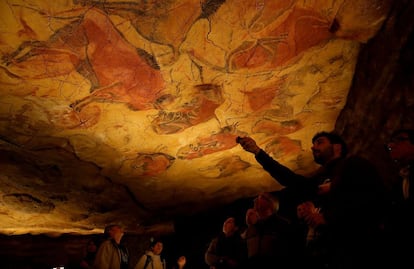La Elefanta Yoyo He died in 2024 at the Barcelona Zoo at age 54. It was an extraordinarily longeva elephant – normally these magnificent animals live a maximum of 40 years in captivity – and, in addition, his body provided a last service to science. A team from the Higher Council for Scientific Research (CSIC) had discovered in Olduvai (Tanzania) bone tools of 1.5 million years, which showed that the Man alertancestors of Homo sapiens They had a cognitive capacity far superior to what was thought. But discoveries are not always enough: prehistoriators sometimes have to resort to experimental archeology, that is, to verify with the same materials how a certain object could be constructed, what function could have and its effectiveness. Therefore, the CSIC team needed a dead elephant to make similar tools and try them.
The body of the elephant Yoyo He had been ceded by the Zoo to the Catalan Institute of Human Paleoecology and Social Evolution (IPhes), in Tarragona, which allowed the CSIC team to recreate the same knives as that species of the genus of the genus Homo He used in Africa at the dawn of humanity. In the wonderful film about the Gruta de Chauvet The Cave of Forgotten Dreams, Werner Herzog, specialists appear in building and testing all kinds of prehistoric weapons. Others have recreated pigments or lamps with reindeer fat that could be used in the deep darkness of the caves to paint.
The fascinating and, at the same time, the enormous difficulty that prehistory raises is that scientists always walk blind: they can classify, but interpret – especially in the case of what we call art, although we do not really know what its social function was – it is always very risky. First, due to the lack of any document that can ratify a thesis and, second, because a discovery can completely change the vision of humanity’s remote past. The Chauvet cave, whose discovery recounts Herzog’s documentary, broke down on a 1994 Christmas morning all the hypotheses that were so far had on parietal art in Europe when paintings of 30,000 years older were discovered than all the figurative art known until then – among Chauvet’s lions and the altamira bison there is more distance than between the Cantabrian cave and Guernica. Third, by a paradox: that we have not found something does not mean that it does not exist. “The absence of proof is not a test,” he often repeats the prehistoriator and expert in Neanderthals Marylène Patou-Mathis. When thousands or even millions of years have passed, it is impossible to measure what has been lost. All scientists thought it was impossible for a cross between Neanderthals and Homo Sapiens to have occurred until the DNA showed that it had happened.
Editorial Alliance has just reissued a book that tells all this as clearly as entertaining: The painters of the caverns. The mystery of the first artists (Translation by Eugenia Vázquez Nacarino), by Gregory Curtis. It is an essay that deserves very much. Curtis, a veteran journalist, tells the history of the discovery of prehistoric art in the nineteenth century and how the vision of the researchers has changed throughout the decades, from the pioneers such as the abbe Henri Breuil or André Leroi-Gouran to Jean Clottes. He also has an important role in the book Marcelino Sanz de Sautola, the discoverer of Altamira in the nineteenth century, from which his contemporaries mocked despite the fact that he had the great intuition that gave rise to the studies of prehistory: yes, it was perfectly possible that thousands of years ago the human beings created extraordinarily sophisticated works of art. But, in a world where we want to understand everything, we find an insurmountable barrier: we do not know why they did these paintings, or what they mean, despite the fact that the emotion that causes its beauty breaks all the barriers of time.
“This is frustrating for scientists and fans equally, since, as works of art, the paintings manage to communicate directly and with great efficiency,” writes Gregory Curtis in his essay. “They were which were the cultural reasons that moved the ancient hunters to paint in the caves, the great artists between them took the annoyance of creating paintings of elegant lines, subtle color, precise perspective and a physical sensation of volume. The horses of lascaux, multicolored and stylized; the pride of the lions to hunt with the eyes lit in chauvet; Heavy, although delicate and winding, of Altamira and Font-de-Gaume are evidence that beauty is really eternal. ”

